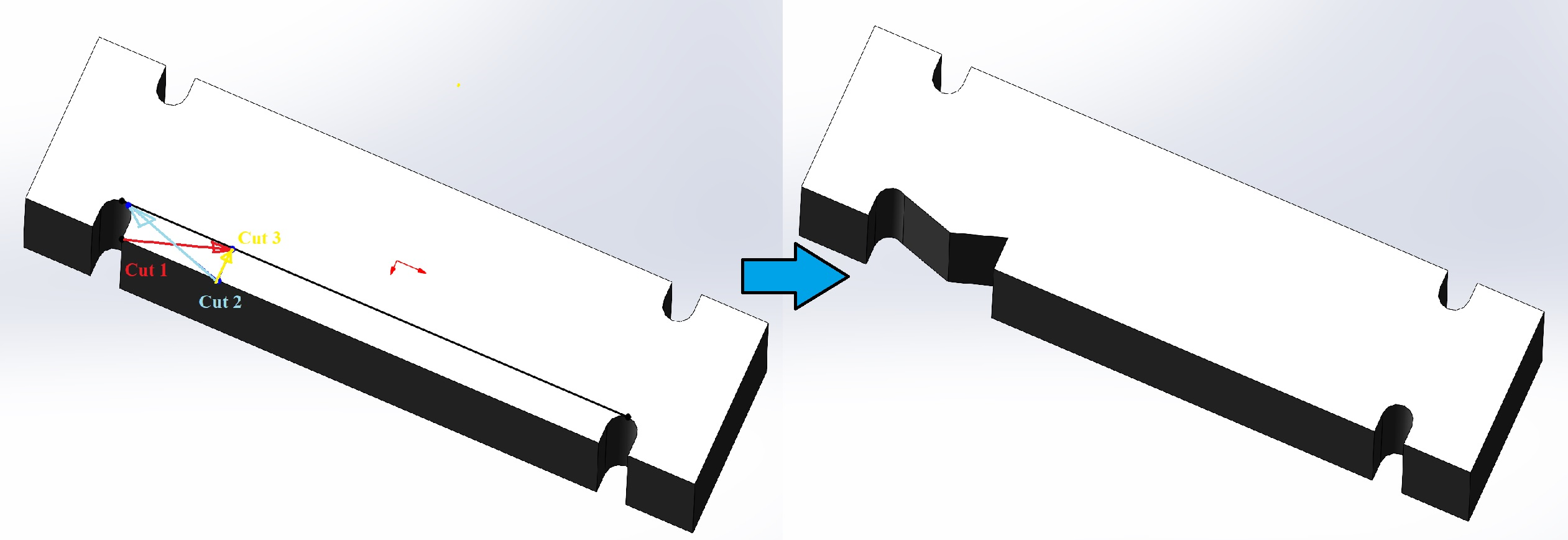I have 36" of Aluminum 6061 square bar (5/8"x5/8") that I am trying to cut into uniform I-shapes shown below where two parallel 2" x 1/8" x 5/8" sections are cut from the long sides of each 2.5" piece.

I have read online that the most accurate method would be to have a long bar that matches the wider dimensions (2.5" x 5/8") and running it through a CNC mill to cut it in to the uniform shape, then cutting it in to 5/8" sections. Unfortunately I do not have access to such a large section of aluminum nor a CNC mill.
I have access to:
- Vertical bandsaw
- Drill Press
- Hand drill
- Miter Saw
- Bench Grinder
I was thinking the most straightforward albeit lengthy (and inaccurate) process would be making four cuts from the outside towards the center, then drilling four holes into the side using the drill press with a 7/64" diameter bit then making another cut to remove any remainder material as shown below:

I would need to follow up with either diagonal cuts into the grooves because my bandsaw blade is 0.5" wide from teeth to flat side, so it wouldn't fit flush against the inner plane yet to do cut the long dimension. I think I would have to do additional cuts to get more material out of the way to cut it flat. At this point the drilled holes seem sorta unnecessary, but I wouldn't want to risk cutting deep into the finished product right at a corner (stress concentration point) with the diagonal cuts (mainly cut #2). That would result in something like below:
I could try to clean away that last triangle to get a flat surface with additional cuts or a file then I could make the long cut along the length of the bar.
This process seems extremely tedious and probably illustrates my inexperience really well-- is there anything else I can do with the tools I have to make this more efficient and repeatable? I will need to process at least 20 of these for the parts I need. Unfortunately there are no metal shops for small jobs where I live, and purchasing from another state costs almost as much in shipping and handling as the parts themselves cost in material and labor, both of which are in the hundreds of dollars range.
Ideally I would like very flat and parallel surfaces, but with the steps outlined so far each side is going to have at least one triangular lump that is difficult to file down. Would a jigsaw with a metal cutting blade help with cutting straighter down into the aluminum? Or maybe a compact angle grinder with a very small diamond blade to start the cut from the top? Even after reading about tools for different metal cutting applications I can't find any that really suit this particular cutting job besides a CNC mill which is thousands of dollars at a minimum.
1. How can I improve/change this process?
2. Would I need additional tools for this project?
I would be willing to spend $200-$300 on a new tool/bit set.
Thank you in advance for any advice and input!

